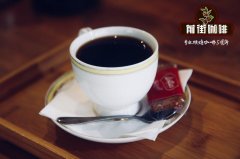Coffee treatment what is the difference between sun treatment and washing treatment and the flavor of coffee

Professional coffee knowledge exchange more coffee bean information please follow the coffee workshop (Wechat official account cafe_style)
Dry process/Natural method is the oldest and most primitive treatment of coffee beans. Arabs used this method to deal with coffee more than a thousand years ago. The harvested coffee cherries are directly exposed to the sun on the terrace and receive direct sunlight exposure (about 27-30 days). The moisture content is changed from 60% to only 12%. The concept of this method is very simple and inexpensive, but it has a lot of variables and risks. It has been used for a long time to deal with beans that are not of such good quality.
Flavor: soft acidity and uniform bitterness, thick consistency, rich layers, obvious sweetness, good quality sun beans will have fruit or wine flavor.
Sun drying: put the fresh coffee fruit in the exposure area to dry, after about 2 to 4 weeks of constant turning to dry until the water content is about 12%. Heat the coffee cherries evenly. After drying, the core and skin of the coffee will be separated, and then the pulp and peel will be removed by a sheller. And so on, the screening is completed.
Water washing is a technology invented by the Dutch in the 18th century. It is suitable for rainy areas. Although the process is quite tedious, it is currently a more common method of raw bean treatment, accounting for about 70% of the total coffee. Use a peeling machine to separate most of the pulp from the coffee beans, then guide the shelled beans to a clean sink, soak them in water and ferment to thoroughly remove the residual pulp layer. Through water treatment, unripe beans and defective beans are selected because of buoyancy, and the fermentation process is easier to control, so the flavor is not mixed like sun beans, but shows obvious acidity, complexity and cleanliness (without any negative flavor, such as astringency or sharpness). But it is also because it is too "clean" and the richness of the flavor is a little weaker.
The flavor shows: the acidity is strong, and the taste is clean, fresh and bright.
Sift out floating beans: rinse the coffee fruit with clean water and remove the immature fruit that floats on the surface.
Remove the pulp: the fresh fruit is sent to the pulp sieving machine for peel and pulp removal.
Pectin removal: after removing the pulp, the seeds are moved into the fermentation tank, after about 16 to 36 hours of natural fermentation, dissolve the surface pectin and then wash.
Dry shelling: keep exposed to the sun for 1-3 weeks to reduce the water content to 12%, and then remove the shell with a sheller.
Washed beans are bluish green in color and beautiful in appearance. Coffee from Guatemala, Colombia, Blue Mountains, Kona, Kenya, Java and Panama are all washed beans.
End
Important Notice :
前街咖啡 FrontStreet Coffee has moved to new addredd:
FrontStreet Coffee Address: 315,Donghua East Road,GuangZhou
Tel:020 38364473
- Prev

Coffee treatment what is the coffee flavor characteristics of water washing treatment
Professional coffee knowledge exchange more coffee bean information Please pay attention to the coffee workshop (Wechat official account cafe_style) washing method put the selected coffee cherries into the peeling machine to initially remove their peel and pulp. Put the coffee beans with residual pectin into the water and let them ferment (about 24 hours). After fermentation, put the raw coffee beans with parchment into the flow tank
- Next

Coffee treatment the difference between washing treatment and semi-washing treatment and the flavor characteristics of coffee
Professional coffee knowledge exchange more coffee bean information Please pay attention to the coffee workshop (Wechat official account cafe_style) washing is a technology invented by the Dutch in the 18th century, suitable for rainy areas, although the process is relatively tedious, but it is currently a common method of raw bean processing, accounting for about 70% of the total coffee. Remove most of the pulp from the coffee beans by peeling the harvested fruit
Related
- What is the meaning of lactic acid fermentation with coffee bean treatment?
- How to judge the state of foam by sound?
- How does the latte pull out the unicorn pattern? Come to get for a little trick to improve the flower pull!
- Will flower pulling affect the taste of the latte?
- Do you know the history of coffee?
- The difference between honey treatment and sun washing what is raisin honey treatment?
- What kind of milk can a novice use to make coffee foam to keep the foam longer? The correct method and skills of milking tutorial sharing
- Why do washed coffee beans taste sour? Flavor characteristics of washed Coffee
- Introduction to the skill of how to practice the size and height of water injection around the circle of hand-brewed coffee
- How do beginners practice coffee flower drawing from scratch?

